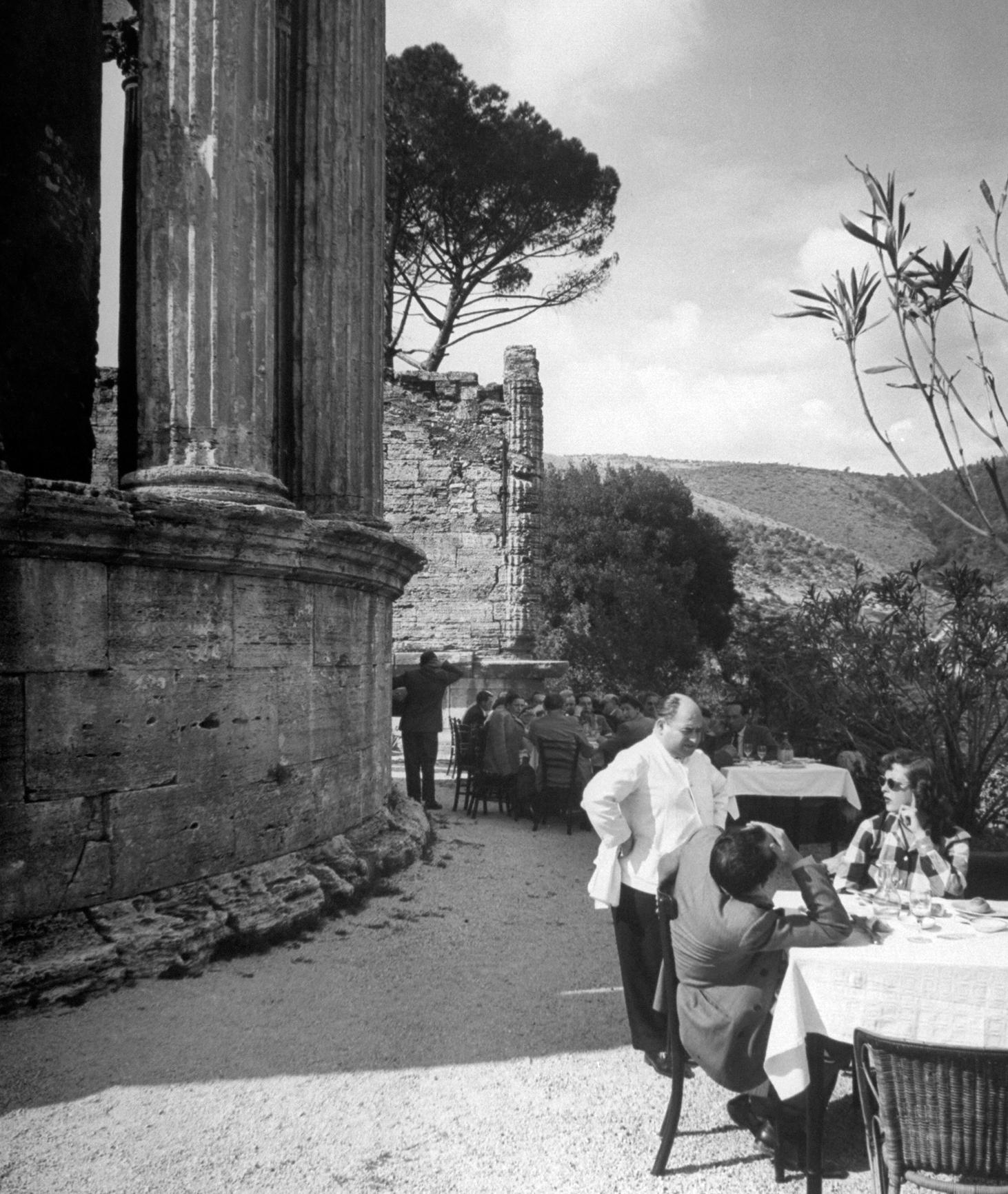

Pure Italian cuisine
pura cucina italiana
Contents
La dolce vita 11
Aperitivo 25
Antipasti 29
Carpaccio Cipriani ❖ Classic carpaccio 31
Mozzarella & burrata 32
Prosciutto & culatello 34
Carne cruda all’ albese ❖ Veal tartare with white truffle 35
Fritto misto ❖ Mixed deep-fried fish 37
Finissima di tonno ❖ Carpaccio of tuna with tuna sauce 38
Gamberoni e caponata ❖ Grilled prawns and stir-fried vegetables 39
I due baccalà ❖ Two recipes for salted cod 40
Le pizzette fritte di Sophia Loren ❖ Sophia Loren’s small pizzas 42
Sarde a beccafico ❖ Stuffed sardines 43
Roberto’s insalata alle capesante ❖ Roberto’s salad with scallops 45
Insalata ai frutti di mare ❖ Seafood salad 46
Il paté Nino Bergese ❖ Pâté Nino Bergese 49
Tartara di branzino con salicornia fritta ❖ Tartare of sea bass with deep-fried samphire 50
Zuppe 53
Minestrone 54
Ribollita ❖ Minestrone with white beans 57
Zuppa di pomodoro ❖ Tomato soup 58
Pappa col pomodoro ❖ Tomato and bread soup 59
Vignarola laziale ❖ Spring vegetable soup from Lazio 60
Primi
Paste & risotti 65
Penne alla Norma ❖ Penne with aubergine and tomato sauce 66
Spaghetti alle vongole ❖ Spaghetti with vongole 69
Spaghetti Don Alfonso ❖ Spaghetti Don Alfonso style 70
Tagliolini al cacao, funghi e gorgonzola ❖ Tagliolini with cocoa powder, mushrooms and gorgonzola 72
Tortellini alla bolognese ❖ Tortellini with meat sauce from Bologna 74
Ravioli ossobuco ❖ Ravioli with ossobuco filling 76
Ravioli del Bengodi ❖ Ravioli with chicken filling 78
Risotto alle fragole ❖ Risotto with strawberries 81
Tagliolini al tartufo ❖ Tagliolini with truffle 82
Ravioli all’astice ❖ Ravioli with lobster filling 84
Risotto alla milanese ❖ Risotto with saffron 86
Risotto allo scoglio ❖ Risotto with seafood 89
Secondi di pesce 93
Branzino al sale ❖ Fish in salt crust 94
Sogliola al burro e limone ❖ Sole with butter and lemon 97
Pesce spada alla puttanesca ❖ Swordfish with spicy sauce 98
Orata in acqua pazza ❖ Dorado in ‘maniacal water’ 101
Cacciucco alla livornese ❖ Fish soup from Livorno 102
Calamari o moscardini in umido ❖ Stewed squid or cuttlefish 105
Triglie alla ligure ❖ Ligurian red mullet 106
Pesce in cartoccio ❖ Fish ‘en papillotte’ 109
Gamberoni al lardo ❖ Gambas with cured pork back fat 110
Coda di rospo al cavolfiore e tartufo bianco ❖
Monkfish tail with cauliflower purée and white truffle 113
Tonno, finocchio, olive nere, rucola e arancia ❖
Tuna with fennel and a salad of black olives, rucola and orange 114
Polpo e ceci ❖ Octopus with chickpea purée 117
Secondi di carne 121
Brasato al barolo ❖ Beef braised in barolo 122
Fegato alla veneziana ❖ Calf’s liver with onions Venetian style 125
Ossobuco ❖ Shank of veal with vegetables 126
Cotoletta alla milanese ❖ Crumbed veal chops 129
Saltimbocca ❖ Escalope of veal with sage and Parma ham 130
Quaglie all’ uva ❖ Quail with grapes 132
Agnello scottadito ❖ Grilled lamb chops 134
Anatra all’ arancia ‘Catharina de’ Medici ❖ Duck with orange 137
Tagliata di manzo al balsamico ❖ Steak with balsamic vinegar 138
Bistecca alla fiorentina ❖ Steak Florentine 140
Tournedos alla Rossini ❖ Tournedos Rossini 141
Contorni 145
Purea di patate ❖ Puréed potatoes 146
Patate al rosmarino ❖ Rosemary potatoes 147
Patate bollite al prezzemolo ❖ Boiled potatoes with parsley 148
Caponata ❖ Stir-fried vegetables 149
Spinaci saltati all’aglio e limone ❖ Sautéed spinach with oil and lemon 150
Peperonata ❖ Stewed sweet peppers 151
Friarielli ❖ Turnip tops 152
Polenta biancoperla ❖ Polenta of white maize 153
Funghi trifolati ❖ Fried mushrooms with garlic and parsley 154
Fagioli nel fiasco ❖ Beans from the bottle 155
Verdure d’estate ❖ Roasted summer vegetables 156
Radicchio alla brace ❖ Grilled radicchio 157
Formaggi 158
Dolci 160
Tiramisù ❖ Classic tiramisù 162
Crepes Cipriani ❖ Crêpes with confectioner’s cream 164
Tortino al cioccolato ❖ Warm chocolate tart 165
Cassata 167
Pere al campari ❖ Pears with campari 168
Panna cotta ❖ Cream dessert 169
Gelati ❖ Ice cream 170
Granite ❖ Granita 171
Soufflé leggero al lamponi ❖ Light soufflé with raspberries 172
Fragole al Galliano ❖ Strawberries with Galliano 173
Index 174
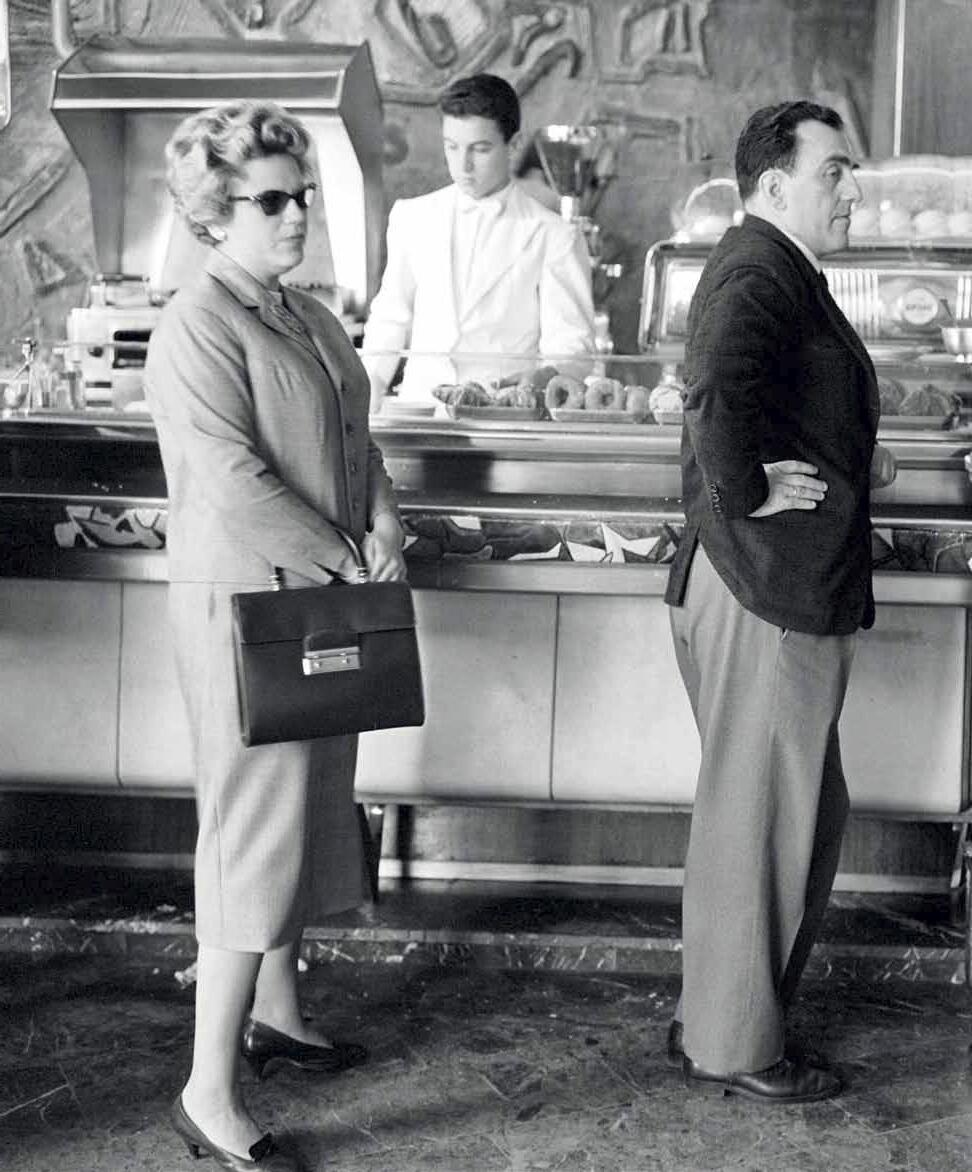
La dolce vita
‘An Italian restaurant without Italians is like a Maserati with a Ford engine: it goes but doesn’t have the power or the subtlety’
So here I am on a rainy Wednesday morning, in the office of the general manager of the Hilton Amsterdam hotel, Roberto Payer. ‘I’ll be out of the country,’ he’d said to me, ‘but Lytsa knows everything, so just sit at my desk and stay as long as you want.’
You try to imagine what a hotel manager’s office will look like. And it turns out to look exactly the opposite to how you’d imagined it. Lytsa Karabinis, Roberto’s personal assistant, takes me in the lift to the basement where the Hilton offices are. Down the corridor on the left, through Lytsa’s office (no one gets to see Roberto without seeing her first) and I am in his office. The first thing you see when you walk through the door is an enormous ‘Ban the bomb’ illustration. It is actually a painting done on scrap wood. Next to it is a photo of John Lennon and Yoko Ono during their famous ‘bed-in for peace’ at the Hilton in Am-
sterdam. There are piles of things everywhere, in all shapes and sizes. Piles of books, piles of papers, piles of leaflets. One wall is covered with certificates of the many awards Roberto has won over the years. I see that he was named ‘outstanding hospitality manager’ by Horeca Nederland, the Dutch association of hotels, restaurants and cafes, back in 1994. He could well have been in the running for this title every year since then.
I have a slight urge to reorganize the cookbooks that are lying, standing or even hanging around the office. There are lots of them. All the Silver Spoon books, of course, in various languages (Roberto is an ambassador in the Netherlands for this classic, bestselling Italian cookbook), but also the book written by Massimo Bottura of Osteria Francescana in Modena (one of the best restaurants in the world) and Italian Food by Elizabeth David. The book Le ricette regionali
‘You could eat at Roberto’s every day, which you wouldn’t do at a restaurant with Michelin stars’
italiane by Anna Gosetti della Salda catches my eye. The longer I look around me, the more cookbooks I see. And lying between them are books about art, designers and hotel management.
At the back of the Dutch edition of what may be the most famous Italian cookbook, The Silver Spoon, there is a section with menus from top chefs. Somewhat surprisingly, between big names like Massimo Bottura and Giorgio Locatelli, you suddenly find a menu from Roberto Payer. Being bracketed together with the greatest chefs on earth while you’ve never been a chef yourself is quite an achievement. Roberto enjoys cooking at home, but leaves the cooking in his restaurants to the professionals.
Roberto is an ambassador for Italian cucina in the Netherlands and president of the Italian Chamber of Commerce for Holland, so gets to see and taste all those wonderful Italian products that arrive in the country. He also chairs the committee that chooses the best Italian restaurant in the Netherlands each year. He has very high
standards. Although he is not a chef, he does all he can to get the most authentic Italian products onto Dutch dinner tables.
It was Roberto Payer’s idea to start a restaurant at the Hilton in Amsterdam which would serve ‘Pura Cucina Italiana’ – authentic Italian cuisine. Roberto’s opened at the hotel’s location on the smart boulevard Apollolaan in 1994. What is better than having your own restaurant named after you? As general manager of the Hilton he had the opportunity to do just that. But – typical Roberto – he wanted more, so Roberto’s is now a concept for the high-quality Italian restaurants that are gradually being launched in Hilton hotels all over the world.
In his office there is a box containing a binder with detailed descriptions of the whole Roberto’s concept. As well as this 200-page manual, there is another binder containing samples of the coordinating colours for carpets, chairs and walls.
Some of the starting points for a cookbook are in these binders, in this office: the passion for cook-

ing and the pure ingredients used at Roberto’s can also be the basis of home cooking. Roberto and his executive chef Franz Conde have selected the best recipes from his kitchen for cooks who want to make real Italian food.
The Roberto’s philosophy is simple yet complicated: truly Italian in every sense of the word. To start with, it means feeling responsible for preserving the culinary heritage and traditional dishes of Italian cucina. Roberto’s works with some hard and fast rules, rules that can also come in useful when cooking at home:
a Only use the very best Italian products.
a All dishes must be true to the characteristics of Italian cucina.
a Only use a limited number of ingredients in each dish.
a The norm is three flavours per dish – this is enough for most dishes.
a Flavours should speak for themselves.
a Simplicity is the main ingredient of each and every dish.
a Simplicity is also at the heart of the combination and presentation of dishes.
A lot of time and energy is spent on finding the right ingredients, which come from different suppliers. If the best Italian products are not available locally, they are imported. All fresh produce is bought locally and even the size of the portions for main courses is fixed. If you order fish, there will be 160 grams on your plate; meat eaters are served 180 grams.
About 15 dishes are always available à la carte. Regular guests expect to find these Roberto’s classics on the menu. All the other zuppe, antipasti, primi, secondi, contorni, formaggi, dolci and gelati are seasonal specials.
The management and the kitchen brigade have daily meetings about the dishes on the menu. What’s important is that they are in line with the basic philosophy of simplicity; simple Italian food. Almost all the food is served on the plate, with just a few exceptions. Examples of this are bollito misto, bistecca alla fiorentina and pappardelle alla romana; these are served at the table.

’Food, drinks, service and ambience –everything must be exactly right and in perfect harmony. Roberto’s is la dolce vita’
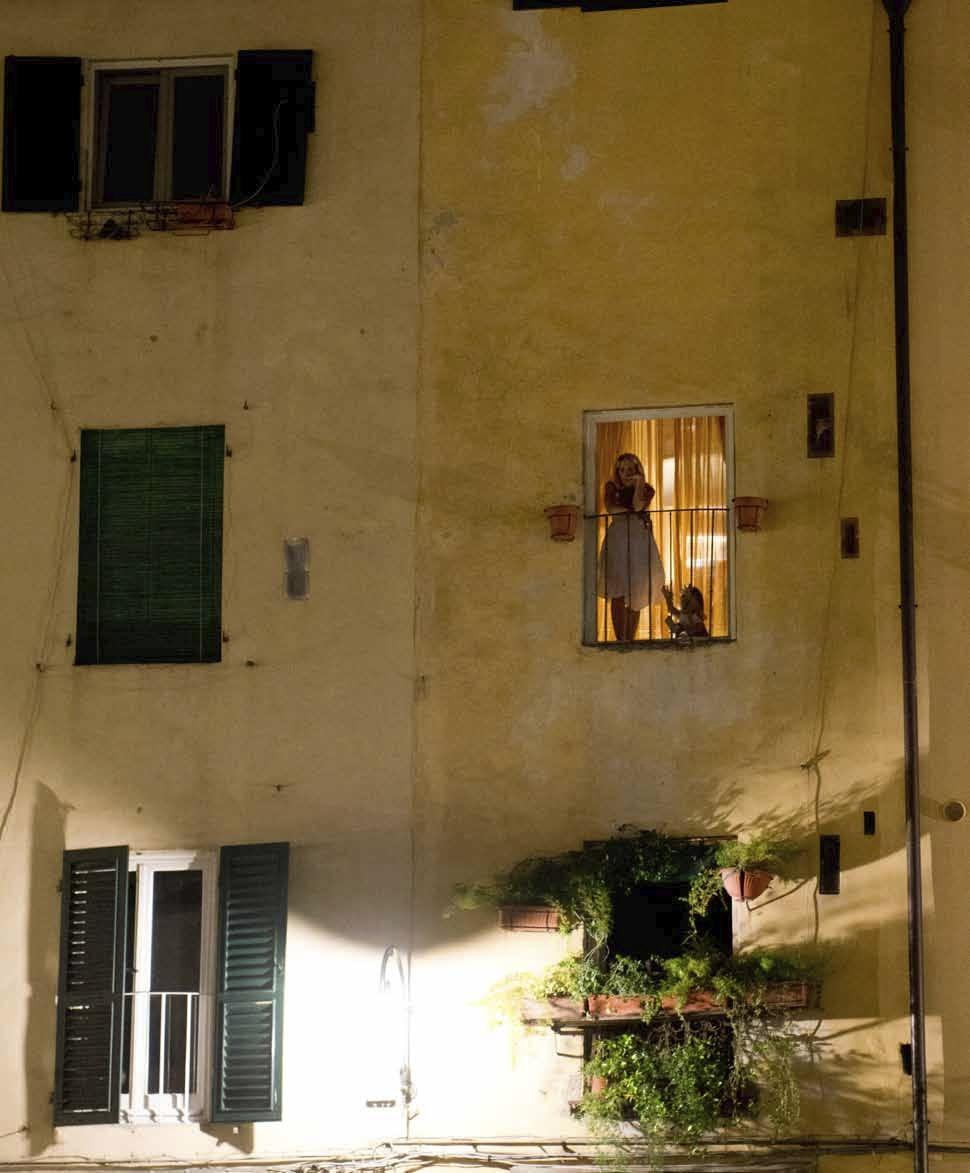
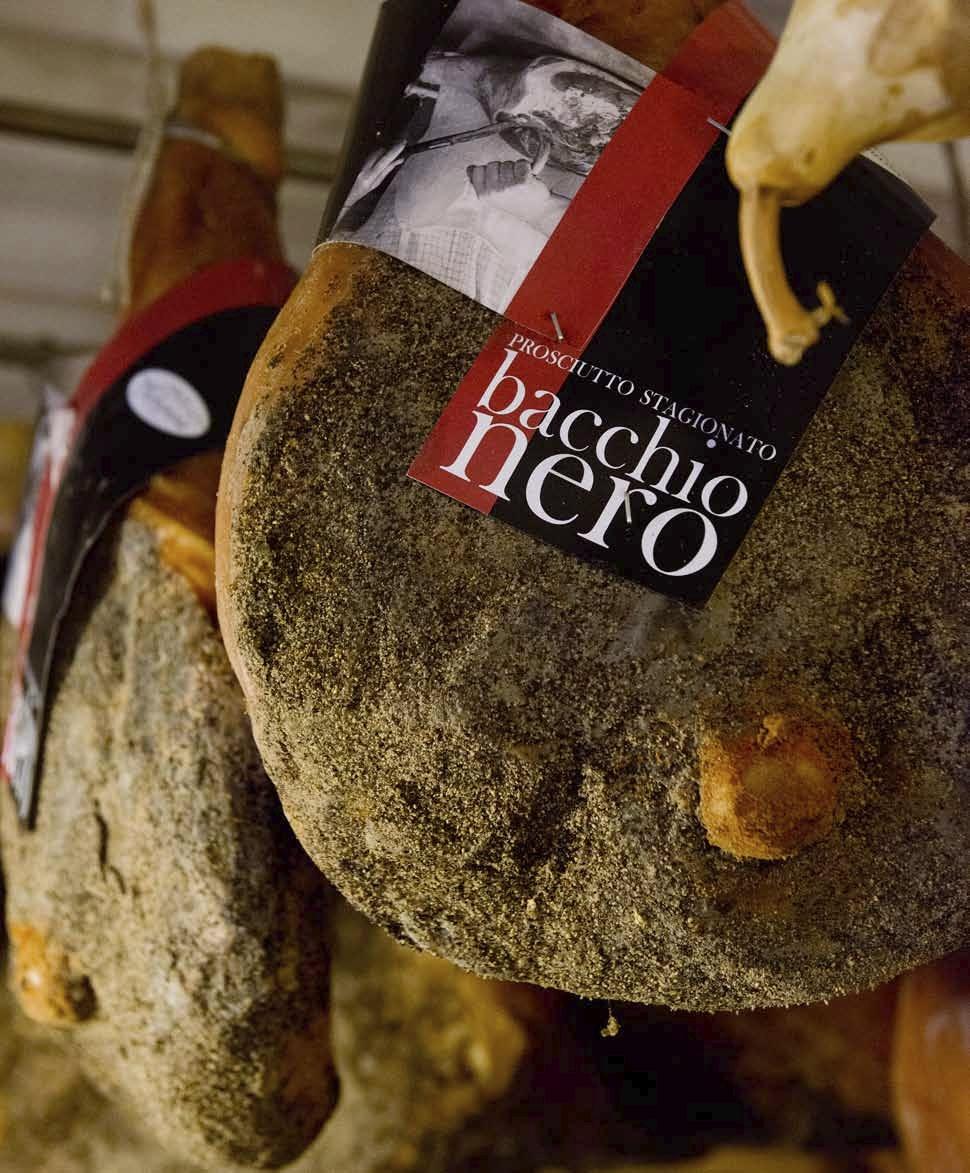
Anti pasti
after an aperitif it is time for antipasti. Fritto misto with salsa verde, grilled aubergines and peppers, insalata caprese with mozzarella that is flown over from Italy twice a week at Roberto’s. And, of course, a platter of cold meats such as fennel salami, different types of prosciutto and a delicious mortadella with truffle. The most wellknown antipasto is carpaccio. Roberto’s has very
strict rules about how this dish should be served. Carpaccio may only be called carpaccio if it is made from thinly sliced sirloin. Nothing else. It is always served with freshly baked bread. At Roberto’s we start baking at 4 o’clock in the afternoon. The structure of the bread will then be perfect at dinner time. Fresh, crusty and at exactly the right temperature.

Carpaccio Cipriani
classic carpaccio
ingredients (beef)
❖ 360 g sirloin steak, one single piece
❖ freshly ground sea salt
❖ freshly ground black pepper
❖ a dash of good quality olive oil
ingredients (sauce)
❖ 1 egg yolk
❖ ½ teaspoon mustard
❖ salt & pepper
❖ 100 ml sunflower oil
❖ 100 ml olive oil
❖ the juice of a ¼ lemon
❖ 1 teaspoon Worcester sauce
serves 4
preparation time 30 minutes
Buy a good quality sirloin. Grass-fed beef is leaner than that from animals fed on grain, and this makes for a lighter and fresher tasting carpaccio.
Clean the steak thoroughly, removing all the fat and peeling off the thin membrane.
Hand-slice the meat as thinly as possible. If you use a very sharp knife you will probably be able to cut slices of 3-4 mm.
Lay between each slice a sheet of baking paper and a layer of plastic film. Pound the meat with the back of a heavy knife until it is 2 mm thick. This breaks the fibres of the meat.
Place the freshly sliced and flattened carpaccio on a plate. Cover with plastic film and keep refrigerated until the moment of serving.
For the sauce, whisk the egg yolk and the mustard together. Add a little salt and pepper.
Then, while whisking, add the oil, slowly at first. Keep whisking until a thick mayonnaise has been formed.
Bring to taste with the lemon juice and Worcester sauce. Thin the mayonnaise by adding a little water; it should have the fluidity of the paint that Jackson Pollock dripped on his paintings.
Take the carpaccio from the refrigerator and sprinkle with the sea salt and black pepper. Wait one minute so that the meat can absorb the salt. Drizzle a few drops of olive oil onto the carpaccio; this makes the dish more interesting and gives the meat a greater depth of taste.
‘Paint’ the carpaccio à la Jackson Pollock with the mayonnaise: not too little, not too much.
Again sprinkle a few drops of olive oil over the carpaccio so that it shines in the dining room lights. After all, you are creating a picture!
Mozzarella & burrata
ingredients
❖ 500 g mozzarella or burrata
❖ 500 g ripe tomatoes, sliced
❖ sea salt
❖ extra virgin olive oil
❖ basil (optional)
❖ dried oregano (optional)
❖ for burrata: rucola, lemon and crostini
wine tips
With mozzarella, drink a Campanian white wine, the greco or fiano, or the fantastic falanghina, one of the oldest sorts of Italian grape. Personally I really like the highly commercialized, but sometimes excellent lacryma christi, made from the grapes that grow on the slopes of Vesuvius.
serves 4
preparation time 5 minutes
Mozzarella should be delicious, tasting like fresh, full fat milk. Burrata is even creamier and is at its best in the company of strong flavours such as rucola (rocket lettuce) and lemon.
Forget all the photos of insalata caprese you have ever seen. If you can get hold of some good mozzarella, serve this whole on the table, and slice it only when you are going to eat. This is all about the freshness of the whey within the cheese. This is what makes the mozzarella flavoursome and delicious. After all, you would never open a bottle of champagne half an hour before your guests are due to arrive, so that they miss the ‘moment supreme’ of the popping of the cork! Serve the mozzarella with the sliced tomatoes that you have seasoned with sea salt and olive oil. Basil leaves are also fine, but they are not absolutely essential. Good quality dried oregano is also an option, but you can also do without any herbs at all. Burrata has such a rich, full flavour that you can best serve it on crispy toast (crostini), with a few rucola leaves and a drop of lemon juice.
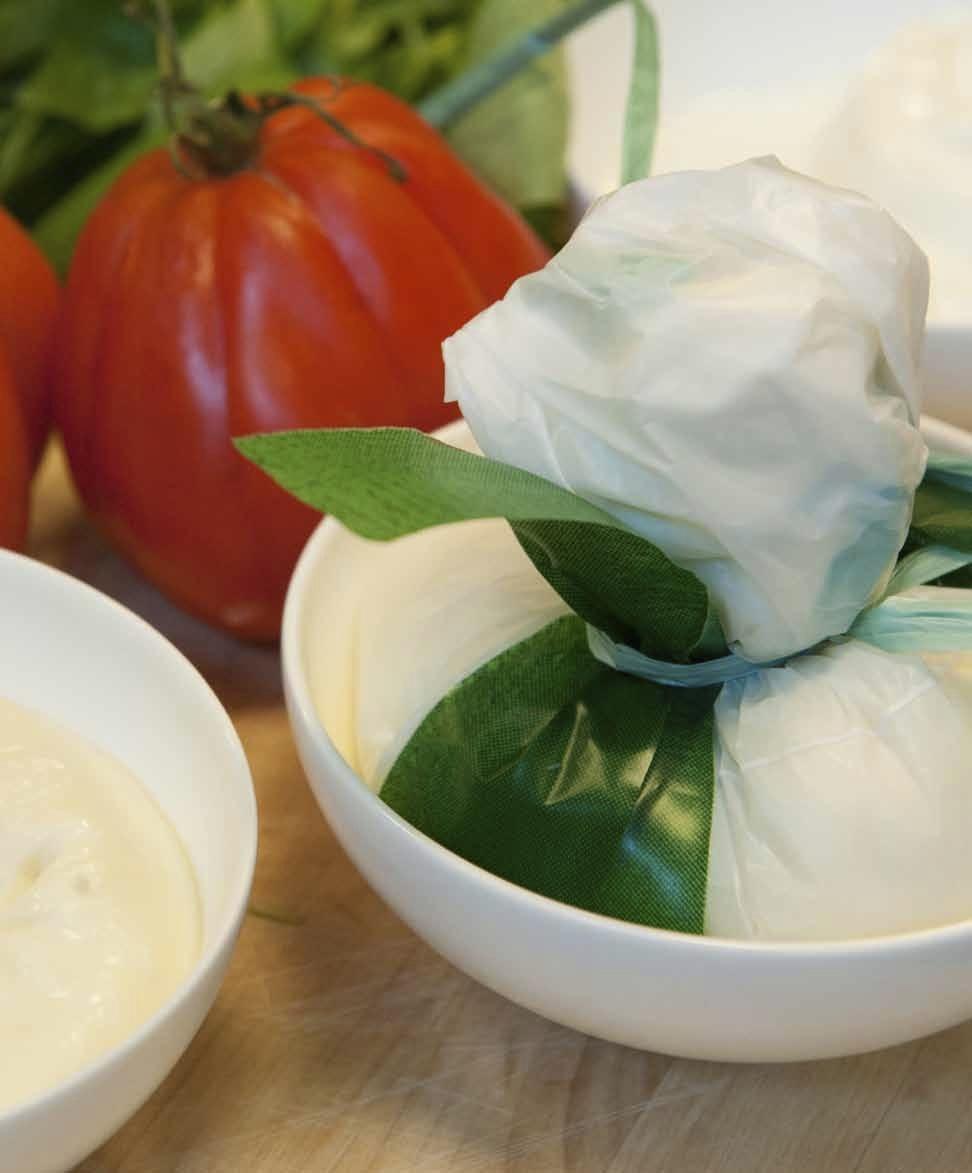
Prosciutto & culatello

ingredients
❖ 400 g prosciutto or culatello
❖ for prosciutto: melon or figs
❖ for culatello: bread and butter
wine tips
There are two schools of thought with regard to the question as which wine is generally the best to accompany ham and salumi (cold cuts) in general. Bubbles are the best choice, in my opinion, and franciacorta (made according to the traditional method) is more tingly than prosecco. The other school chooses red wine, which doesn’t necessarily have to be expensive. Try a simple sangiovese. Tip from an insider: lambrusco!!!
serves 4 preparation time 10 minutes
A careful choice of the right prosciutto is an art in itself. Italians choose their prosciutto for emotional reasons (they know the maker, or they buy their ham from a local farm) and because of its quality. The area around Parma is well suited for making prosciutto because it is very cold in the winter and warm and humid in the summer. San Daniele ham is produced in a mountainous area that gets moist air from the Adriatic. Humidity and warmth give the ham complexity. Ham that is produced in very cold areas is as a rule somewhat bland; this is why this ham is generally smoked and covered with herbs, like speck di Asiago, for example.
Culatello di Zibello is an exceptional ham because it is made from the dorsal muscle of the hind leg of the pig, in dark, moist cellars, where the beneficial bacteria of culatelloes from the past are present. The maker of culatello (worthy of mention is the Antica Corte Pallavicina) judges when the flow of moisture should be limited – according to tradition – by allowing the morning mist into the cellar. The complexity of a good culatello cannot be described and, strangely enough, goes well with the local lambrusco. A fantastic Italian combination: the best ham in the world and one of the cheapest wines in the world!
Cured, salted meat should be sliced immediately before eating. Slice it when it is slightly colder than room temperature, and slice it thin. A few days before you are going to slice it, you should wrap the culatello with a tea cloth soaked in white wine, so that the ham is softer and moister. It’s worth waiting for, believe me.
Serve the prosciutto with ripe melon or figs, and the culatello – which can be a little drier – with bread and butter, but do not eat both sorts art the same time. Culatello should be tasted on its own, followed by a piece of bread and butter, so that the following mouthful of culatello is, as it were, a new experience.
Carne cruda all’ albese
veal tartare with white truffle

ingredients
❖ 320 g loin of veal (in Italy the word ‘vitellone’ is used, which is comparable to pink veal)
❖ salt & freshly ground black pepper
❖ 50 ml extra virgin olive oil
❖ circa 2 g freshly shaved white truffle
serves 4 preparation time 15 minutes
Chop the meat finely by hand, to your own liking (it must still have a ‘bite’ but at the same time chopped sufficiently finely to cohere) and season with salt and pepper. Some truffle purists believe that black pepper doesn’t go with truffle, as they say pepper influences the complex aromas of the truffle too strongly; however, if you use pepper judiciously, each ingredient actually enhances the flavour of the other. Add the olive oil and some shaved truffle and mix well. Serve the meat on a dish and sprinkle some more shaved white truffles on it.
wine tips
This dish is traditionally served with a good red wine from Piemonte, such as a dolcetto or, even better, a barbaresco or barolo. But if the carne cruda is served as an antipasto, it goes excellently with white Gavi di Gavi. And although it might being going too far to suggest this –this dish pairs well with a white burgundy; the Piemonte region was once French for a while!
